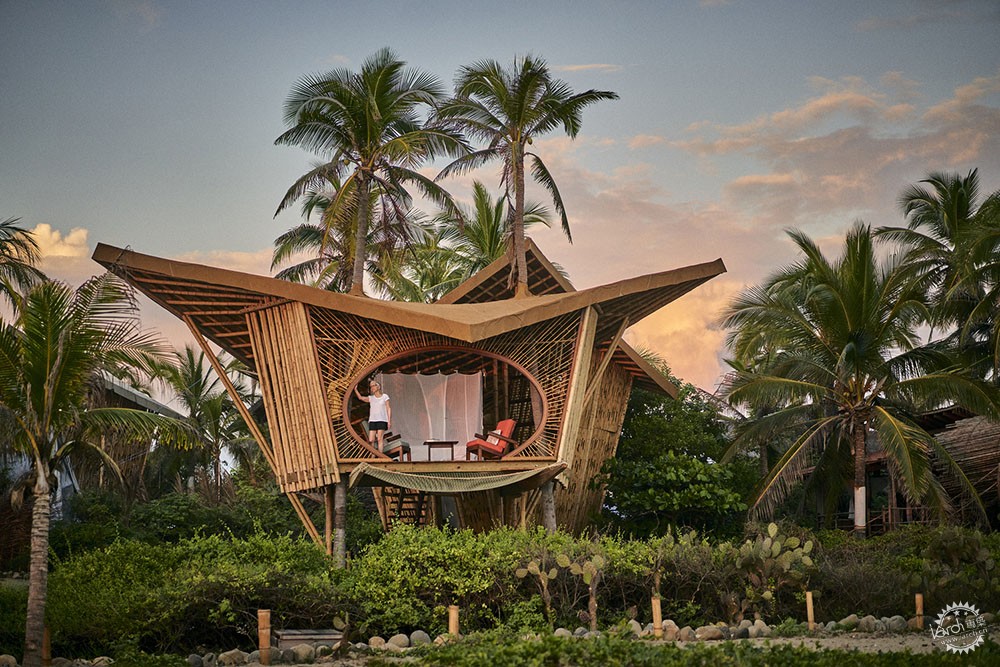
Bamboo Treehouses at Playa Viva / Atelier Nomadic
由专筑网邢子,小R编译
Atelier Nomadic事务所在Nomadic 度假村的设计工作室,为Playa Viva设计了一系列的竹子树屋,这是一个具有环保意识的度假村,致力于可持续性和再生的实践。这些积极的体验是Playa Viva不可分割的一部分,这个度假村完全脱离能源网而运行,100%能源来自太阳能发电。度假村与当地社区广泛合作,支持健康和教育,并致力于恢复和振兴周围的土地。该度假村是再生旅游组织的创始成员,并支持和建造了La Tortuga Viva海龟保护区。
Text description provided by the architects. Atelier Nomadic, the design studio at Nomadic Resorts, has designed a series of bamboo treehouses at Playa Viva, an environmentally conscious resort dedicated to sustainability and regenerative practices. The positive impact is integral to the Playa Viva experience, which is run entirely off-grid and generates 100% of its energy from solar power. The resort works extensively with the local community to support health and education and works year-round to restore and revitalize the surrounding land. The resort is the founding member of the Regenerative Travel organization and founded and supports the La Tortuga Viva turtle sanctuary.
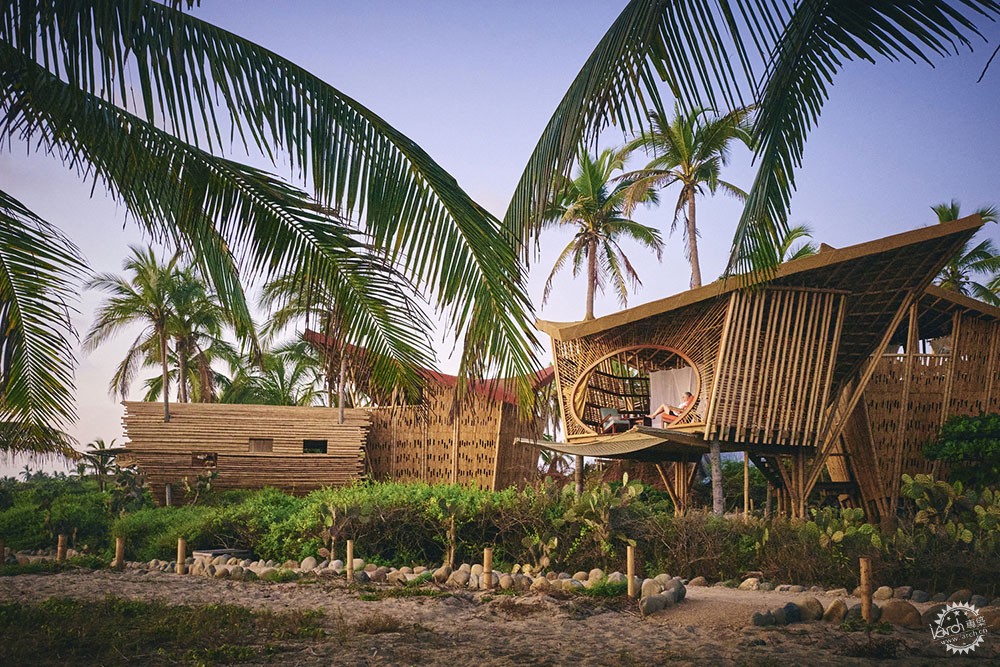
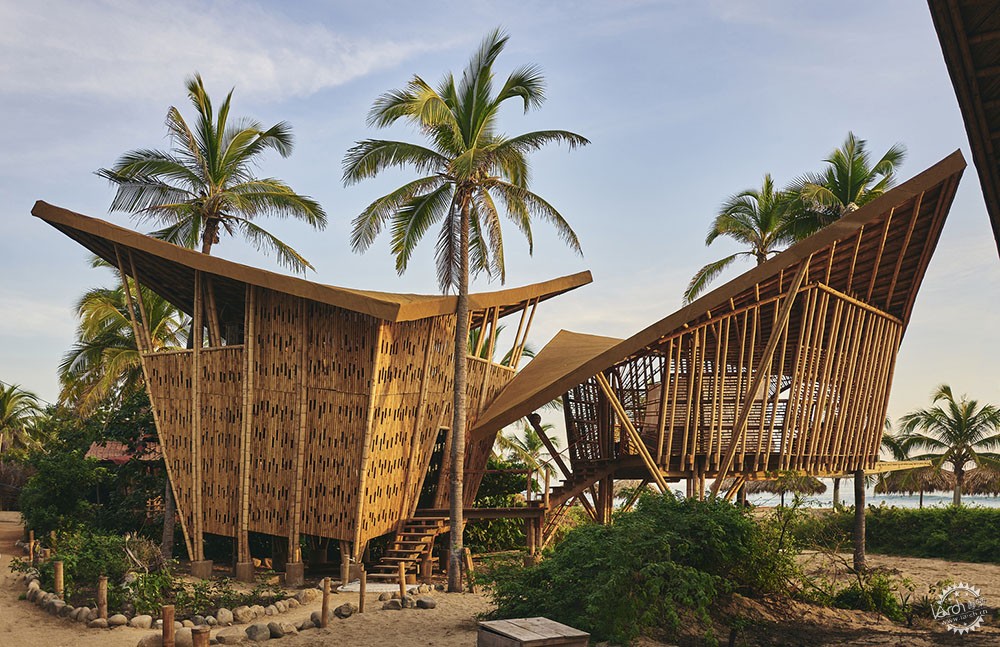

度假村的最新扩建部分包括6个竹制树屋,其灵感来自于迁徙经过度假村海岸的莫布拉鳐鱼的扁平棱形的身体。这些树屋散布在墨西哥的海岸线上,栖息在椰子树上,俯瞰着海浪。每个树屋都由主卧室和后面的附属部分组成,后者包含位于楼下的浴室和位于楼上的另一个卧室和休息室。
The resort's latest extension includes 6 bamboo treehouses inspired by the flattened, prismatic bodies of the Mobula Rays that migrate past the property's shore. Scattered along the Mexican coastline, the treehouses are perched on coconut palms overlooking the surf. Each treehouse is composed of a master bedroom at the front and an annex treehouse at the rear that contains the bathroom downstairs and a second bedroom/lounge upstairs.
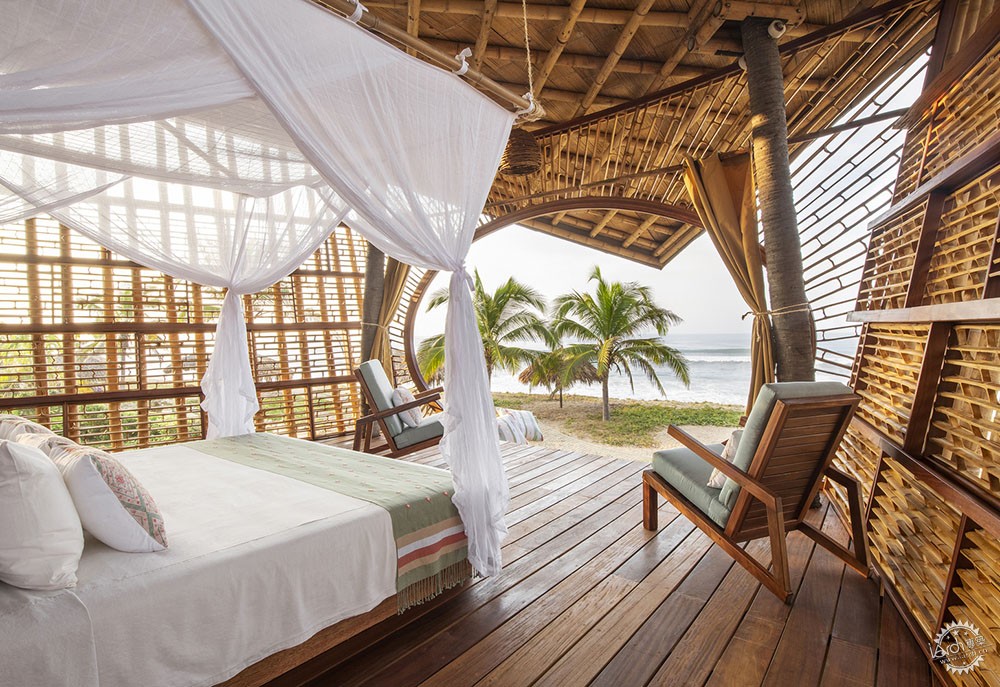
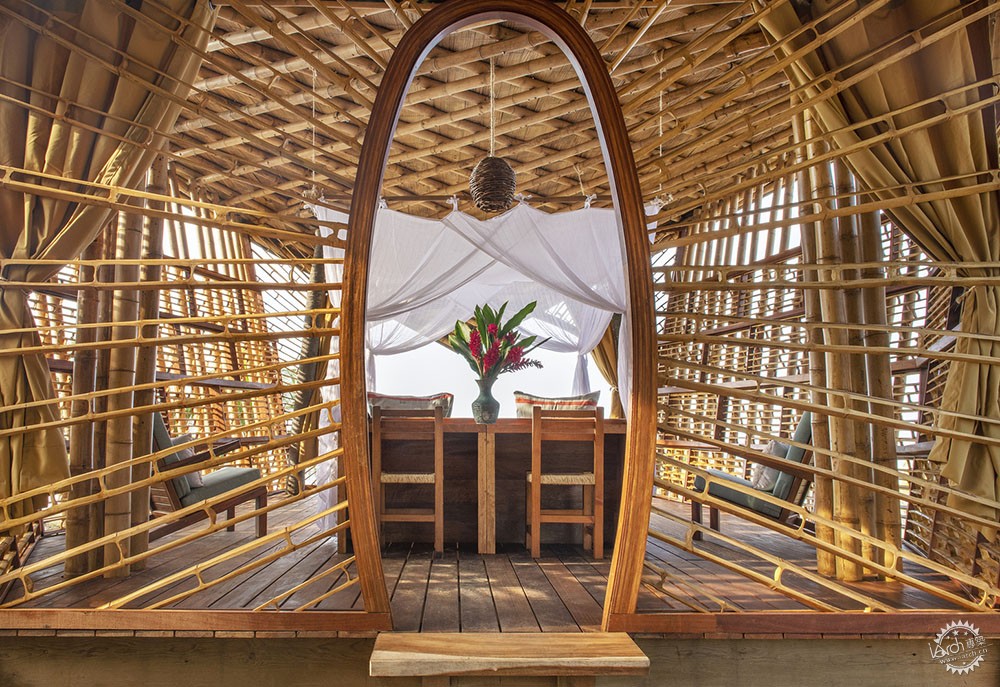
树屋的开发采用了生物气候学设计原则,以适应自然环境。大屋檐就像一把大伞,遮蔽强烈的太阳热量,并保护人们免受大雨的侵袭,外墙的百叶窗可以实现自然交叉通风。
The treehouses are developed using bioclimatic design principles to suit the natural environment: the large eaves of the roof act like a big umbrella, providing shade for the strong heat of the sun and protection from heavy rains. The façade louvers allow for natural cross ventilation.
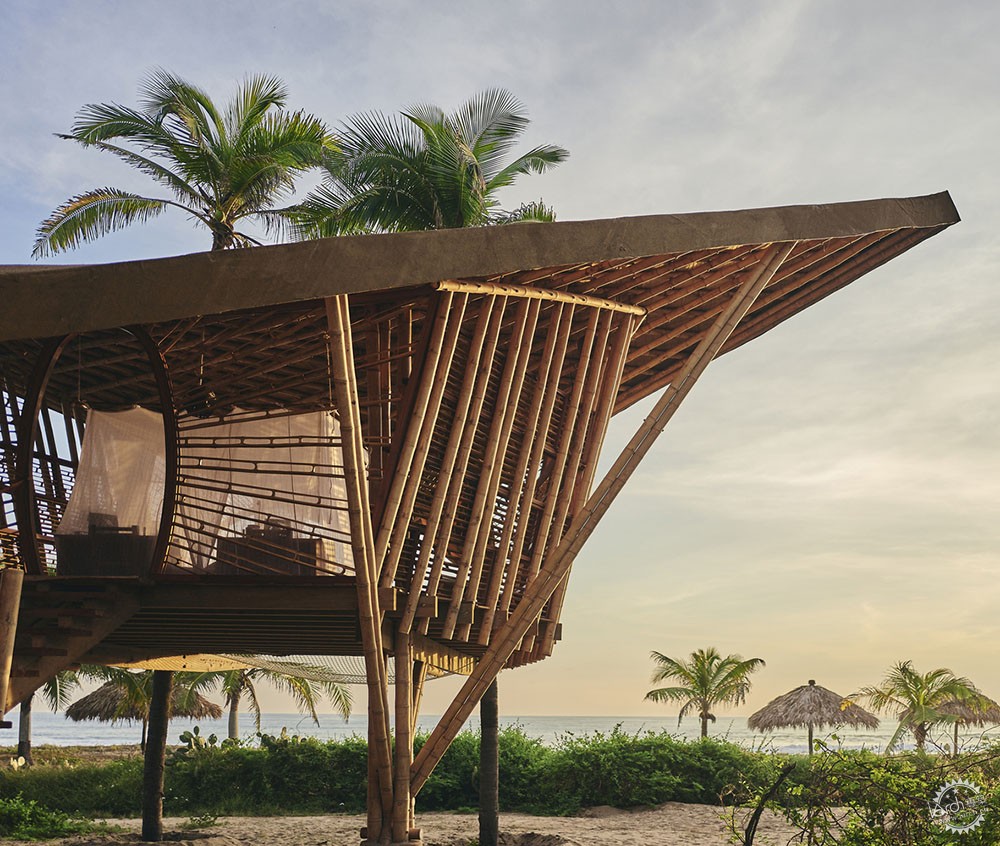
这些结构大多由当地的竹子建成。竹子是世界上增长最快的可再生建筑材料之一,这也展示了这种多功能材料的广泛使用。强壮的Guadua竹竿应用于主体结构和屋顶结构,截面条被用于外墙百叶窗,扁平的竹板构成了天花板。Phyllostachys Aurea竹竿和木钉被用于附属建筑的墙壁和外墙板,地板由当地的可持续生长的Cumaru木材制成。
The structures are mostly built from local bamboo, one of the fastest-growing renewable building materials in the world, and showcase the wide variety in which this versatile material can be used. Strong Guadua bamboo poles were used for the main structure and roof structure, section strips were used in the façade louvers, and flattened bamboo panels form the ceiling. Phyllostachys Aurea bamboo poles and dowels were used for the wall and façade panels in the annex building. Flooring is made of sustainably grown local Cumaru timber.
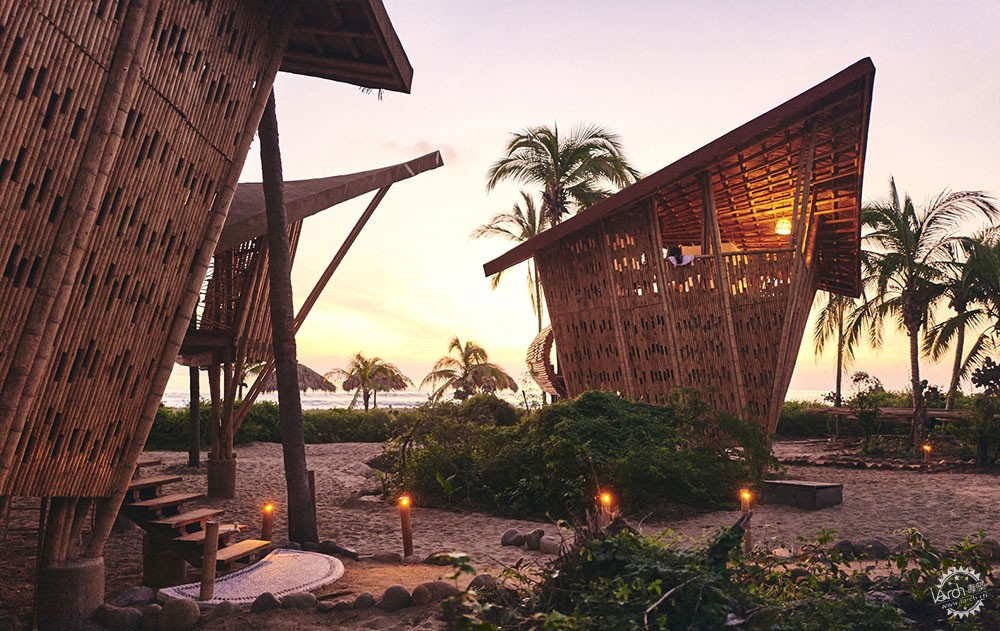
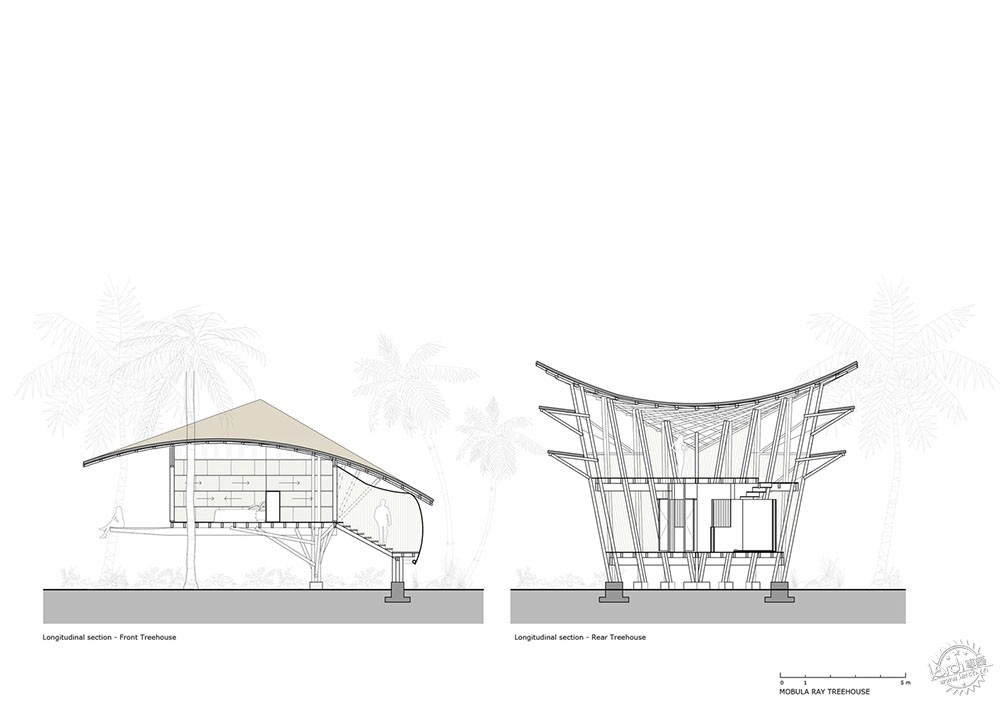

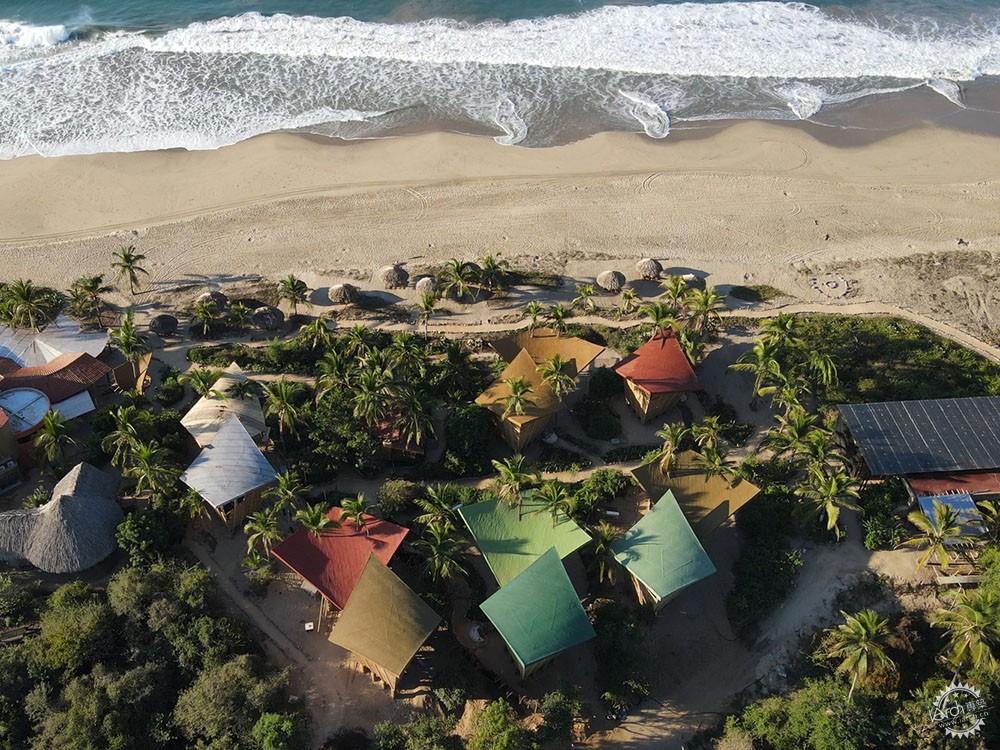
整体设计的目的是与预期的后COVID旅行者的愿望相一致,他们希望住在令人兴奋且健康的环境里,沉浸在自然中。经过几个月的隔离生活,在这里,客人可以重新与自然环境联系起来,听着海浪的声音,沐浴在温暖的夕阳中,感受微风在棕榈树叶间摇曳,躺在沙滩的吊床上,仰望着星星,呼吸着未被污染的新鲜空气。
The holistic design was intended to align with the expected post-COVID travelers’ desire to stay in exciting, healthy accommodation, immersed in the natural environment. After months of isolation and lockdowns, here, guests can be submerged and re-connect with the natural environment: listen to the sound of the waves, bath in the warm sunset tones, feel the breeze sway through the palm leaves, and taste the salt air, unmasked, as they lounge on the hammock suspended over the beach, staring at the stars.
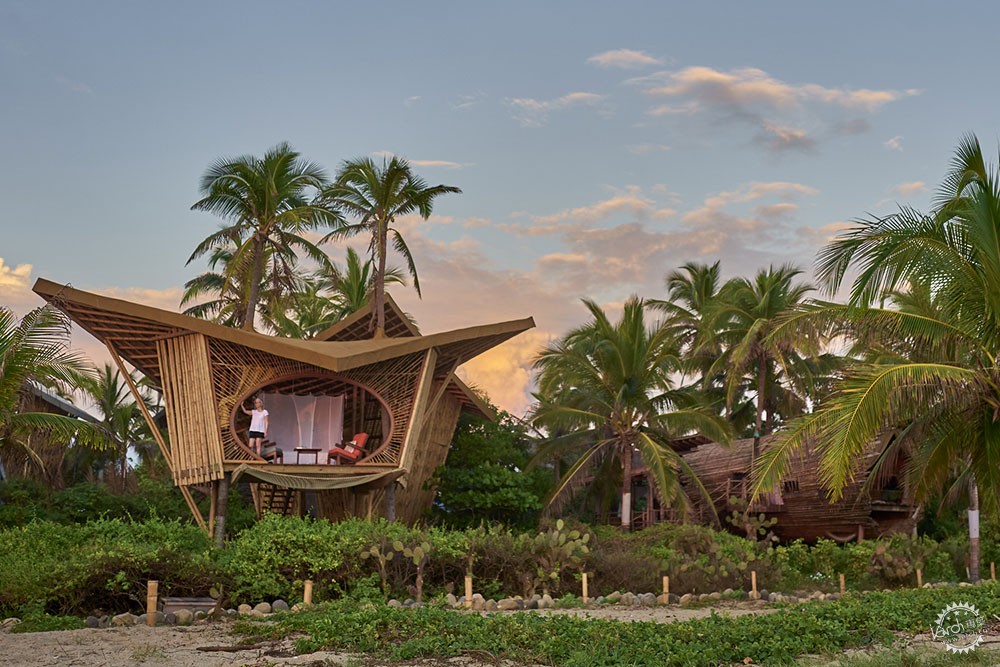
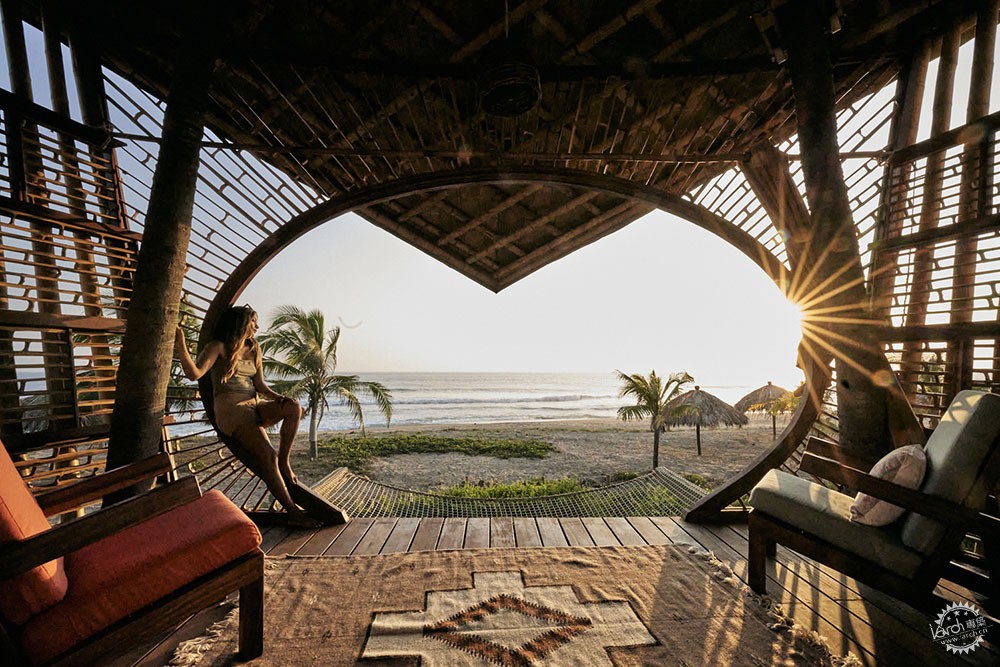

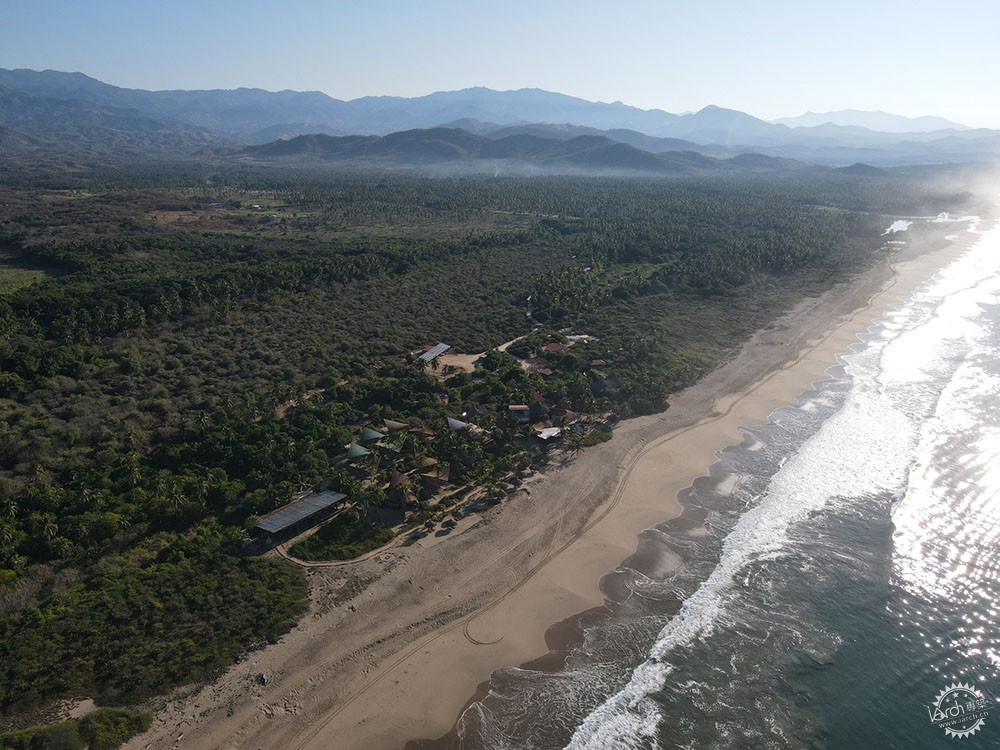
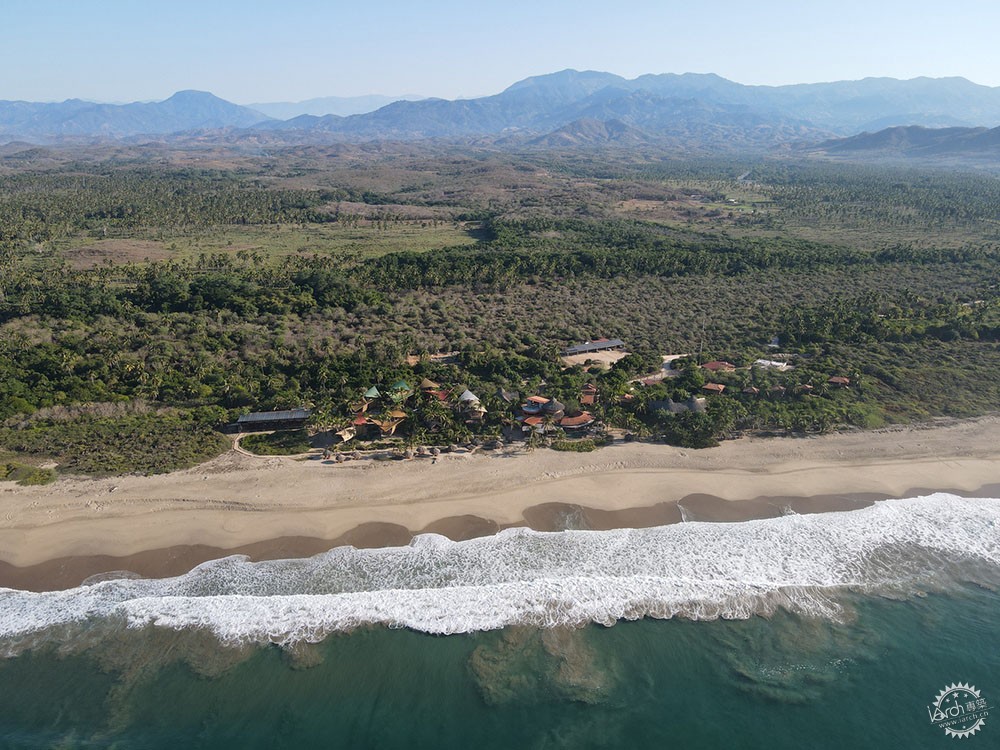
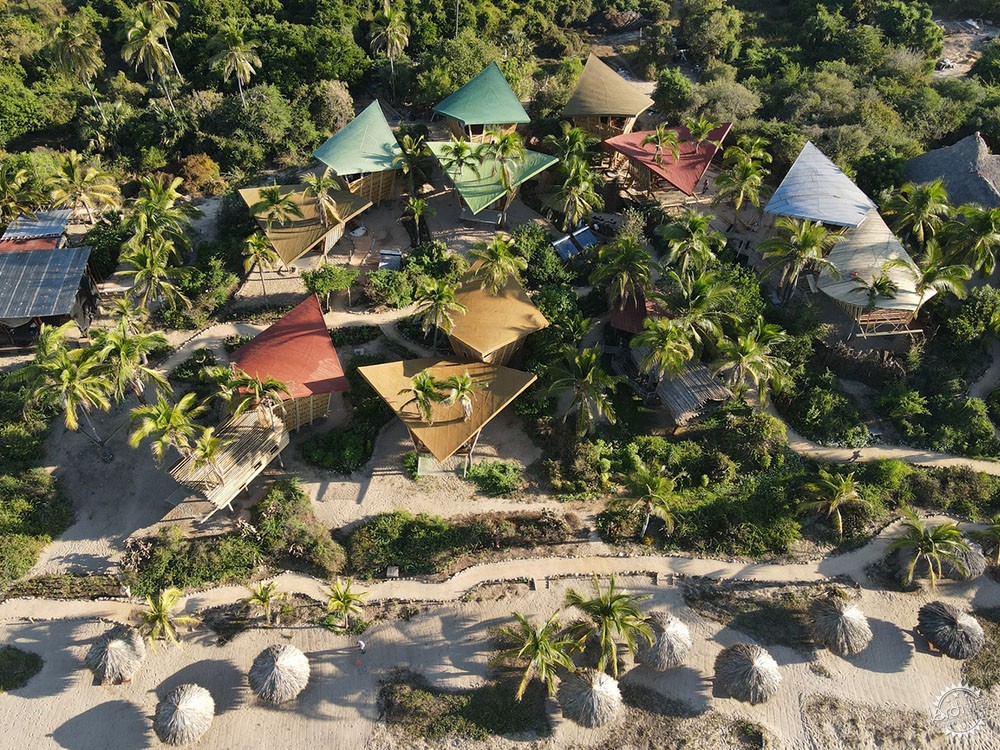
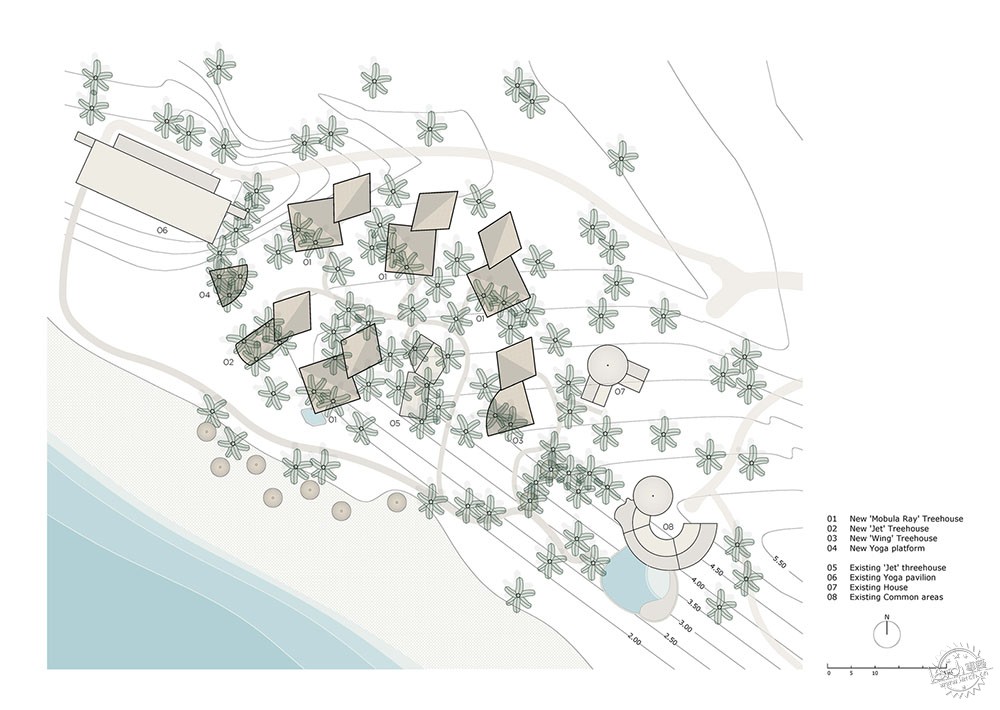
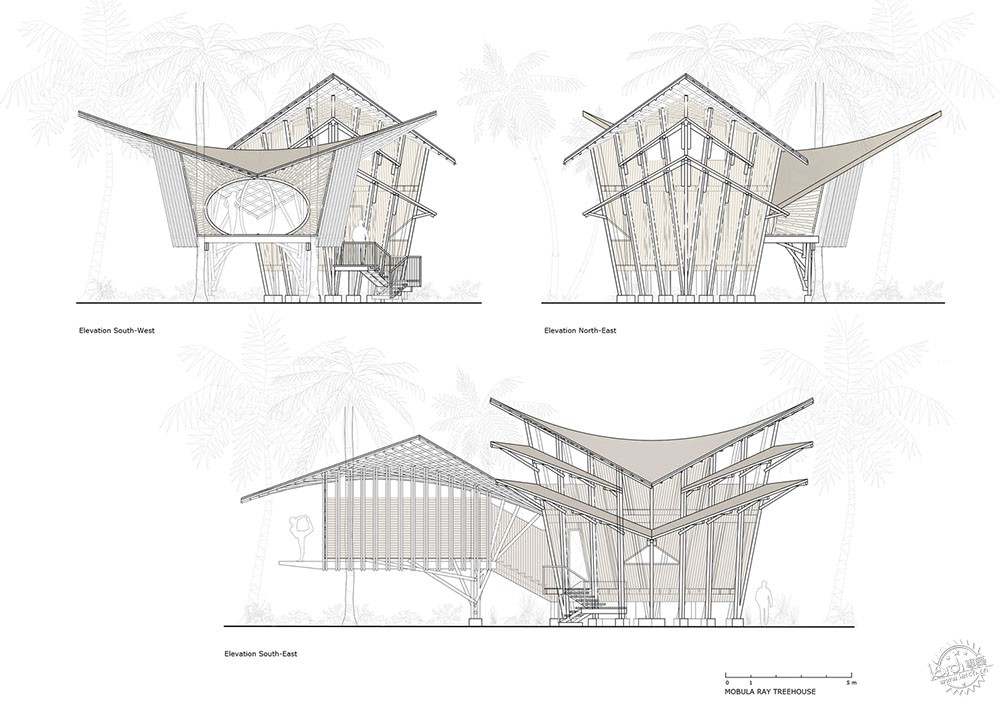
建筑设计:Atelier Nomadic
类型:酒店/木屋旅馆/可持续建筑
面积:448 m2
项目时间:2021年
摄影:Kevin Steele, AVABLU, Playa Viva
制造商:AutoDesk, Lumion, Rhinoceros
建筑师:Luca Fiammetta,Maddalena Losindaco
城市:El Calvario
国家:墨西哥
HOTELS, CABINS & LODGES, SUSTAINABILITY•EL CALVARIO, MEXICO
Architects: Atelier Nomadic
Area: 448 m2
Year: 2021
Photographs: Kevin Steele, AVABLU, Playa Viva
Manufacturers: AutoDesk, Lumion, Rhinoceros
Lead Architect: Olav Bruin
Architect: Luca Fiammetta
Architect: Maddalena Losindaco
City: El Calvario
Country: Mexico
|
|
